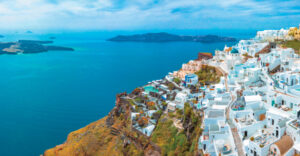Seismology professor Kostas Papazachos spoke about the ongoing seismic tremors in Santorini and the surrounding area.
Specifically, during his appearance on Mega’s Live News, he stated:
“The situation is as it was announced yesterday. We are dealing with a persistent sequence, which is why we describe it as stable, though at high levels. To put it into perspective, we’re experiencing 130-140 earthquakes above 3 Richter per day. That means around fifteen to twenty quakes of 4 Richter, one or two of 5 per day on average. Some days we may get just one, other days two, and occasionally even three. This pattern has remained unchanged for about 12 days. There was a slight decrease at some point, but now it continues at the same pace. So, we’re talking about a sequence that has remained consistently difficult for over ten days.”
He continued:
“This doesn’t necessarily mean the activation of different faults. If you look at the seismograms, you’ll notice something quite typical. You get a cluster of quakes lasting one to two hours or even longer, followed by a gap of 6-10 hours, and then another round of activity. The locals have picked up on this pattern fairly early on. When these quakes happen at night, it’s tougher. If they occur during the day, they’re less of an issue. The running joke among the residents is that they’d rather have them around 7-8 p.m. so they can enjoy a peaceful night’s sleep. This is a very typical phenomenon that occurs when fluids interact with faults, causing episodic earthquake generation.”
He added:
“Magma and fluids are two different things. Right now, nobody knows if there is any magmatic material at that depth or deeper. There are some suspicions based on broader studies, but at the moment, we have no evidence of magma presence. Some scenarios suggest it, but there’s no proof to back them up. Even with fluids, it remains an interpretation, as similar activity has been observed in various earthquakes—even tectonic ones. This has been recorded in the Sea of Marmara and purely tectonic regions. These earthquake fluctuations are noted in major international reports. The same thing happens in non-volcanic areas like Kefalonia and Lefkada. We know that within the Earth’s crust, there are multiple sources of activity. In volcanic areas, it’s clear that these sources interact with and fuel fault movements.”
Ask me anything
Explore related questions





